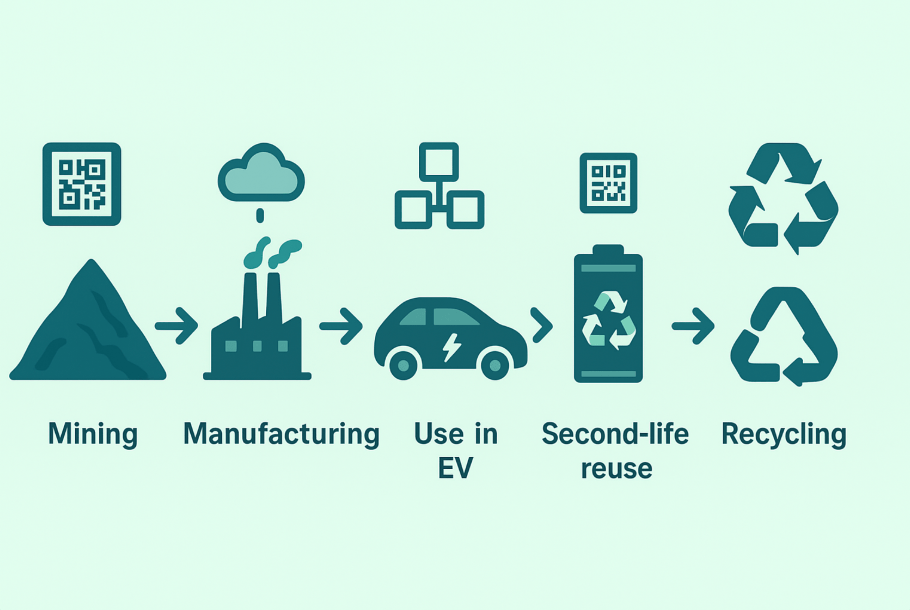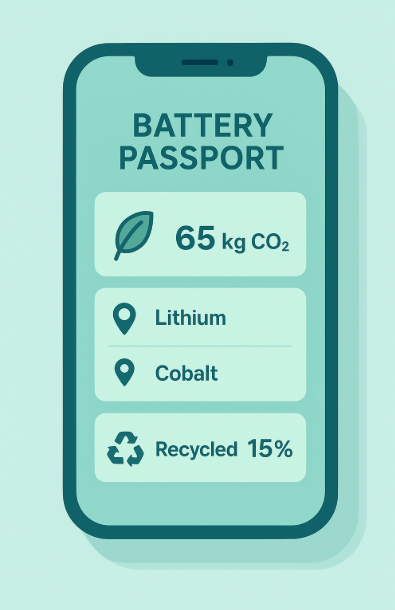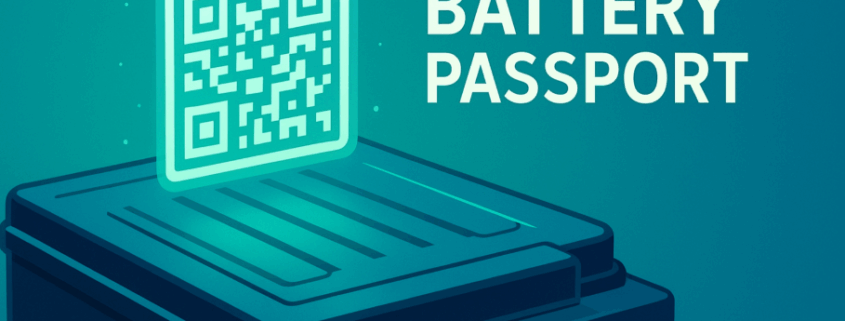The Future of Battery Passport: Driving Transparency in the Energy Transition
What is a Battery Passport?
The Battery Passport is a digital record that tracks essential data about a battery’s lifecycle — from raw material sourcing to recycling. Think of it as a “digital twin” that provides information on carbon footprint, material origin, performance, and compliance.
Starting in 2027, the EU Batteries Regulation will mandate that all industrial and EV batteries above 2 kWh must include a digital Battery Passport accessible through a QR code. This initiative is designed to build transparency, safety, and sustainability across the global energy ecosystem. (European Commission)
At Sunlith Energy, we recognize how this change aligns with our mission to build safer, cleaner, and future-ready energy storage systems (ESS).
Why the Battery Passport Matters
1. Traceability Across the Supply Chain
The Battery Passport ensures that every stage — from mining to manufacturing, EV usage, second-life applications, and recycling — is documented. This reduces risks of unethical sourcing and improves compliance with global sustainability standards.

Learn how UL Certifications for Battery Systems already help ensure safety and traceability in energy storage.
2. Compliance with EU Regulations
By 2027, all manufacturers must adopt digital passports for large batteries. This includes data on materials, carbon footprint, and recycling rates. The Battery Pass Project provides detailed guidance on the required attributes (Battery Pass Consortium).
3. Boosting Consumer Trust

Consumers and fleet operators will be able to scan a QR code and instantly view:
- Carbon footprint (e.g., 65 kg CO₂ per battery)
- Material origin (Lithium: Chile, Cobalt: DRC)
- Recycled content (e.g., 15% of metals reused)
This transparency empowers greener purchasing decisions.
Global Efforts Driving the Battery Passport
The Global Battery Alliance (GBA) is leading the effort by developing a standardized Battery Passport Framework (GBA Battery Passport). GBA pilots are already running with automakers and energy companies to test data sharing and compliance models (GBA Pilots).

Even automakers are moving ahead — Volvo became the first to issue a digital battery passport for its EV lineup, well before the EU mandate (Reuters).
At Sunlith Energy, we’re preparing our commercial and industrial ESS to meet these requirements, ensuring compliance and customer trust.
Benefits for the Energy Storage Sector
🔹 Sustainability and Circular Economy
Battery Passports encourage second-life applications and recycling by providing accurate records of material health and usage cycles. This helps optimize ESS deployments for solar, wind, and commercial operations.
🔹 Industry Standardization
With frameworks like the DIN DKE SPEC 99100, companies gain a clear path to standardize reporting and compliance (Charged EVs).
🔹 Competitive Advantage
Companies that adopt the Battery Passport early will gain a market edge, especially in Europe, where sustainability standards are strict.
Battery Passport Implementation Timeline
- 2024–2025 → Pilot projects and voluntary adoption (GBA Pilot Wave)
- 2026 → Mandatory data collection requirements for large batteries
- 2027 → Battery Passport becomes legally required in the EU
How Sunlith Energy is Preparing
At Sunlith Energy, we design battery energy storage systems (BESS) that are built with compliance, safety, and traceability in mind. Our approach includes:
- Partnering with certified cell and pack suppliers
- Aligning product designs with UL 1973, UL 9540, and IEC 62619 standards
- Preparing for integration of Battery Passports into our commercial and industrial solutions
Learn more about how we ensure safety in our products:
Conclusion
The Battery Passport is more than a compliance requirement — it’s a gateway to transparency, sustainability, and trust in the energy storage industry. From raw material sourcing to recycling, it ensures accountability across the entire value chain.
At Sunlith Energy, we’re not just preparing for the 2027 EU mandate — we’re building future-ready storage solutions that embrace transparency and circular economy principles today.
By preparing early, manufacturers, suppliers, and recyclers can reduce costs, meet regulations, and build consumer trust.The future of batteries isn’t only about performance—it’s also about traceability, accountability, and circularity.
FAQ
Q1: What is a Battery Passport?
A Battery Passport is a digital record that provides detailed information about a battery’s lifecycle — from raw material sourcing to recycling. It includes data on carbon footprint, material origins, compliance certifications, and end-of-life options.
Q2: Why is the Battery Passport important?
It ensures transparency, sustainability, and safety in the battery industry. By making information accessible through a QR code, it helps regulators enforce standards, supports recyclers with accurate chemistry data, and builds consumer trust.
Q3: Do all batteries need a passport?
Not yet. Initially, only industrial and EV batteries over 2 kWh must comply. Smaller consumer batteries may be included in later phases.
Q4: When will the Battery Passport become mandatory?
Under the EU Battery Regulation, all industrial and EV batteries over 2 kWh must have a Battery Passport by February 2027. Pilot projects are ongoing from 2024–2025, with data collection requirements starting in 2026.
Q5: How are Battery Passports implemented technically?
They are accessed via a QR code, RFID, or digital identifier, linked to a secure database. Some projects use blockchain for tamper-proof records, while others rely on centralized registries.
Q6: Who benefits from the Battery Passport?
Manufacturers → Ensure compliance and demonstrate sustainability.
Recyclers → Gain accurate data for efficient recovery of valuable materials.
Consumers → Access battery performance, footprint, and sustainability data.
Regulators → Monitor environmental impact and supply chain responsibility.
Q7: What does this mean for consumers?
Consumers gain access to sustainability data, battery health metrics, and recycling instructions—boosting confidence and transparency.
Q8: What data does a Battery Passport include?
Q9: Is the Battery Passport only for EV batteries?
Initially, it applies to EV and industrial batteries above 2 kWh, but experts expect smaller batteries for electronics and light mobility devices to be included in future updates.
Q10: How does the Battery Passport support recycling?
By providing chemistry and material breakdown data, recyclers can recover lithium, cobalt, nickel, and other critical minerals more efficiently. This supports the circular economy and reduces dependence on new mining.


